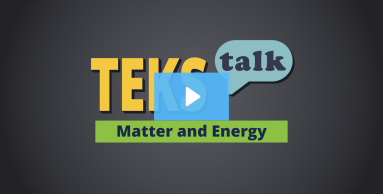- Science
- Grade 8
- Matter and energy
Back to TEKS search
Science.8.6.A
The student is expected to explain by modeling how matter is classified as elements, compounds, homogeneous mixtures, or heterogeneous mixtures;

Knowledge and Skills Statement
Matter and energy. The student understands that matter can be classified according to its properties and matter is conserved in chemical changes that occur within closed systems.
Supporting Information
Research
Brown, Tom, Greg Rushton, and Marie Bencomo. “Mighty Molecule Models.” Science and Children 45, no. 5 (2008): 33–37. https://www.jstor.org/stable/43174819
Summary: "Mighty Molecule Models" explains a hands-on investigation into building compound molecules. Students begin by modeling atoms of elements and exploring the idea of elements bonding to form new molecules and compounds. Students propose chemical formulas based on the models constructed. This article supports learning at this grade level and teacher conceptual development beyond this grade level.
